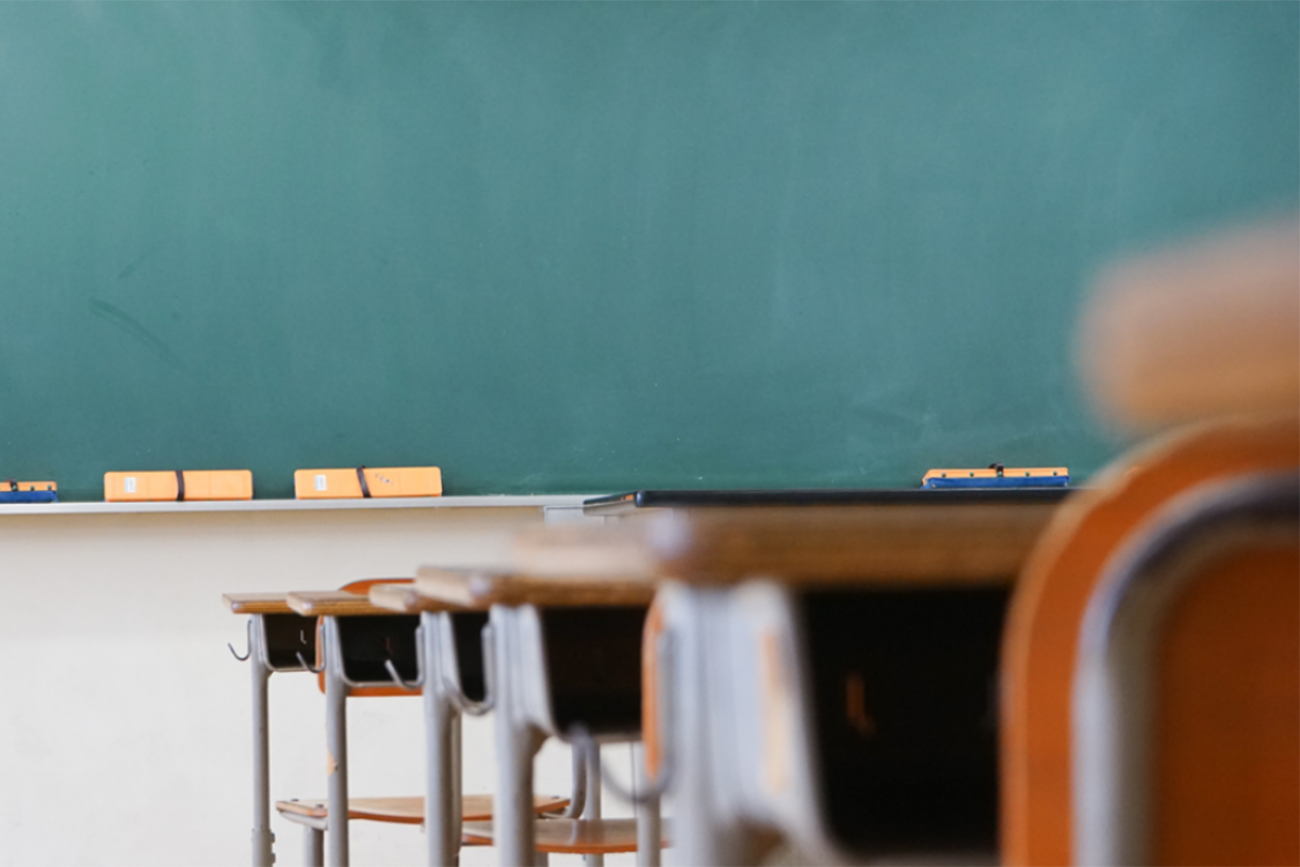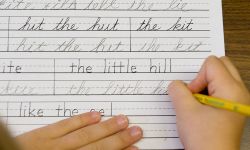Michigan student test scores slump, as COVID halts slow progress

Test scores in Michigan schools slumped during the past academic year, as educators and students scrambled to adjust amid a once-in-a-century pandemic.
Results released Tuesday from the M-STEP, the state’s federally-mandated standardized test given to students in grades 3-7, and similar tests given in grades 8 and 11, show steep declines in learning during the 2020-21 school year in almost all grades and subjects.
The dip occurred among poor and non-poor, white, Black, Hispanic and Asian students, in urban, rural and suburban classrooms.
Related:
- See how your Michigan school fared in the 2021 M-STEP test
- Which Michigan school COVID measures work? We asked scientists
- Michigan will release M-STEP results soon. Here’s what to expect
- After months of Michigan school mask protests, anti-anti-maskers mobilize
The percentage of students scoring high enough to be considered “proficient” or higher fell between 2018-19 and 2020-21 in every grade in math, and in grades 3-7 in English language arts.
In English, the share of third-graders considered “proficient” or higher dropped from 45.1 percent to 42.8 percent; in sixth-grade math, from 35.1 percent to 28.6 percent; in eighth-grade social studies, from 28 percent to 25.9 percent.
The learning slowdown was expected in a year that had many Michigan students lurch between online learning and socially distanced classrooms. Students in some school districts spent the entirety of the 2020-21 school year learning from home.
State officials advised families to be cautious about interpreting the decline in scores. Fewer students took the test than usual and there were wide disparities in participation rates between districts.
Other states are weathering similar test score declines.
Still, the results were a sobering confirmation of the challenges faced by students trying to learn long division and sentence structure from kitchen tables rather than classrooms.
Among the results:
- The share of students scoring at a level considered “proficient” or higher in English language arts dropped from 2019 – the most recent year the test was given – in grades 3-7. The share of students considered “proficient” or higher inched upward for grades 8 and 11.
- Scores in math nosedived in the seven grades in which the test is administered, dropping by more than 5 percentage points in grades 4, 5 and 6. Less than 30 percent of fifth- and sixth-graders who took the test score at a level considered “proficient” or higher.
- The racial gap in scores remained enormous. Among third-graders, the share of white students considered “proficient” or higher in English language arts (48 percent) was more than three times the share of their Black classmates who did the same (15 percent). On the same test, 58 percent of Asian third-graders were proficient or higher, compared to 31 percent of Hispanic students and 28 percent of students who are economically disadvantaged.
In 2019, scores inched upward or declined at a slower pace than the previous year, giving hope that the state’s public schools were beginning to reverse years of academic malaise.
The results were still nothing to brag about. Less than half of students in every grade in every academic subject tested were deemed “proficient” in the subject matter.
Still, that qualified as progress for Michigan, which in previous years had seen consistent declines in student achievement on the test.
The M-STEP was not administered in 2020 because of the pandemic. Education leaders view the 2021 results as a historical blip that offers a window into the unprecedented challenges faced by educators and students last school year, but that have little value in gauging learning going forward.
“I don’t think we can use a test taken in the middle of a pandemic to look for trends,” said Robert Shaner, superintendent of Rochester Public Schools in Oakland County.
Still, it’s likely that the true learning skid is even worse than the data released Tuesday indicates.
In typical years, schools are required to have at least 95 percent of students take the M-STEP. That federal rule was relaxed last school year because of the pandemic – schools had to give the test, but students, particularly those taking classes online, could opt out.
The percentages of students who took the English language arts and math M-STEP tests in the spring ranged by grade and subject from 64 percent to 72 percent, and varied wildly between school districts.
In Detroit Public Schools Community District, the state’s largest district and one that has in the past has had low test scores, less than 10 percent of students in grades 3-8 took the test.
In affluent Forest Hills Public Schools near Grand Rapids, nine in 10 students took the test.
“The 2020-21 school year was such an uneven year with high health risks for students and staff, inconsistent technology, and variations in teaching and learning across the state,” state Superintendent Michael Rice said in a statement. “Any analysis of M-STEP results must factor in low participation rates in state testing.”
The results are neither surprising nor useful, said Robert McCann, executive director of the K-12 Alliance of Michigan, which represents school leaders from the state’s most populous counties.
“It made little sense to us to give students a test that assumes they’ve been in a typical school year and is tracing their progress in a year that was anything but typical for them,” he said. “For some, it wasn’t academically they struggled but socially and emotionally,” and those struggles were reflected in test scores and participation rates.
Participation rates were particularly low in majority-minority and low-income districts, where students tend to score lower on standardized tests.
For example, only 43.3 percent of Black third-graders took the test compared to 81.3 percent of white third-graders, according to an analysis by researchers at the Education Policy Innovation Collaborative (EPIC) at Michigan State University.
Third-grade students in districts that scored in the bottom quartile in 2019 were far less likely (35.9 percent) to take the test this year than students in districts that scored in the top quartile (80.6 percent).
That means the true state of learning slowdown in the pandemic is probably worse than the M-STEP data indicates, said Katharine Strunk, director of EPIC.
“It’s very hard to compare because different types of kids were taking the tests in each district, and in some districts very few kids took the test,” particularly those that were virtual, she said.
Virtual districts were more likely to be in areas more severely affected by COVID-19, and it’s impossible to disaggregate the mental and physical health effects of the pandemic from the scores, Strunk said.
Strunk’s team of researchers at MSU found similar results when analyzing test scores from other tests given to students in Michigan schools during the 2020-21 school year.
That data, released publicly Tuesday, indicated that students started school in the fall of 2020 with roughly similar levels of academic achievement as previous classes, but they learned at a slower pace as the year progressed. By the spring of 2021, they had fallen behind.
A separate report issued by EPIC Tuesday found that low-income and racial minority third-graders were more likely than their white,non-low-income classmates to be flagged for retention by the state because of low reading scores on the M-STEP.
“We are bracing ourselves for a year where we’re going to be doing a lot of re-teaching,” said Jeff Thoenes, superintendent of Comstock Public Schools in Kalamazoo County. “We realize it’s not the kids’ fault and we’re taking them where they are, preparing our lessons and moving on.”
Detroit Superintendent Nikolai Vitti downplayed the usefulness of the M-STEP results, saying in a statement that the district will review the scores, but “drawing conclusions of significance will be difficult because many students opted out of the state test because it was not required and only offered in-person.”
Scores fell even in schools that managed higher participation rates. Mohammed Alsanai, principal at Frontier Academy, a K-12 charter school network in Detroit of nearly 900 students, said between 85 percent and 90 percent of students took the test.
High school scores dropped sharply, he said, reflecting academic struggles after a year of virtual learning.
Teachers will take those numbers into account this fall as they work to help students catch up, but he said elementary school scores will be less useful. Some younger students, unused to test-taking after so much time away from school, seemingly weren’t able to stay focused.
“Some of the students would finish the test in 15 or 20 minutes,” he said. “It’s supposed to take three hours.”
Michigan schools are preparing for a more normal school year this fall. Some pandemic health mitigation efforts are still in place, such as face masks for more than half of the state’s students and possible quarantines, but students are back in classrooms five days a week, giving educators hope for what is bound to be a long road to academic recovery.
“Will kids ultimately recover? I believe so,” said Lou Steigerwald, superintendent of Norway-Vulcan Area Schools in the Upper Peninsula. “Do we have data this close to this event? No.”
His district and others around the state have $6 billion federal COVID relief funds to spend in the next three years to bolster education recovery efforts. Steigerwald would like to hire more certified teaching staff and classroom support personnel, to provide more personal attention for struggling students.
Those efforts are hampered by a teacher and paraprofessional shortage.
“It’s like we have money for a new car but GM doesn’t have any,” Steigerwald said.
Elizabeth Birr Moje, dean of the University of Michigan School of Education, cautioned against the view that children are “behind.”
“Some children have experienced enormous loss, whether it was an immediate family member or extended family member, and whole communities of color experienced COVID at disproportionately high rates of hospitalization and death,” she said. “These are children who shouldn’t be put into classrooms and then told, ‘You’re behind. Catch up,’” Birr Moje said. “We need to start the year with a focus on the social and emotional health of our children because children who are stressed, children who are anxious, children who are angry cannot learn effectively.”
Birr Moje said schools should nurture children’s emotional needs, not drill them on academics to catch them up quickly since that can turn them off to learning.
“The research on children in times of crisis and children who have experienced serious trauma shows they can learn really effectively as long as they’re cared for. They can get back up to speed, and they can be successful,” she said. “I fully expect to see (test scores) bounce back up.”
Michigan Education Watch
Michigan Education Watch is made possible by generous financial support from:
Subscribe to Michigan Education Watch
See what new members are saying about why they donated to Bridge Michigan:
- “In order for this information to be accurate and unbiased it must be underwritten by its readers, not by special interests.” - Larry S.
- “Not many other media sources report on the topics Bridge does.” - Susan B.
- “Your journalism is outstanding and rare these days.” - Mark S.
If you want to ensure the future of nonpartisan, nonprofit Michigan journalism, please become a member today. You, too, will be asked why you donated and maybe we'll feature your quote next time!






